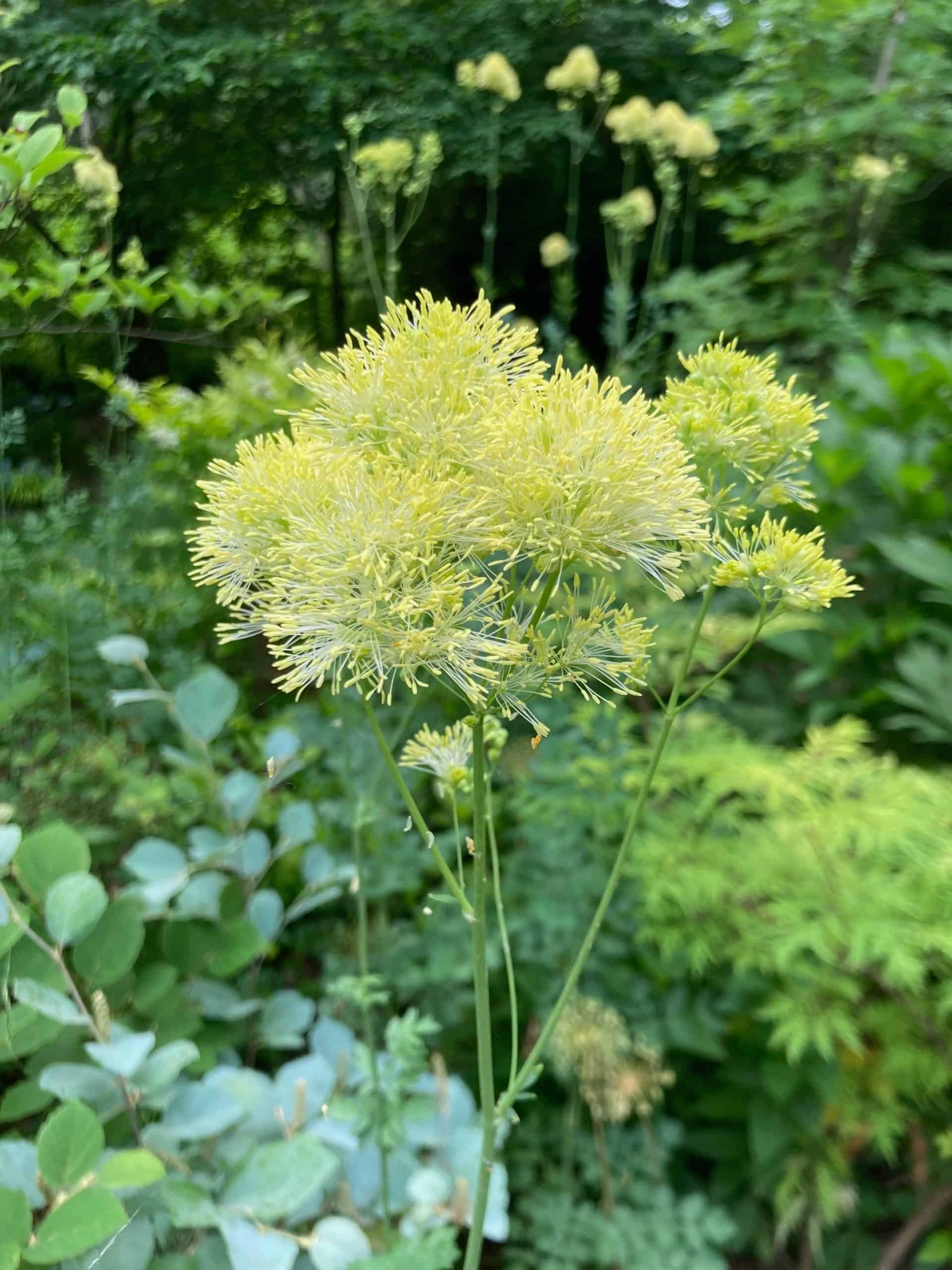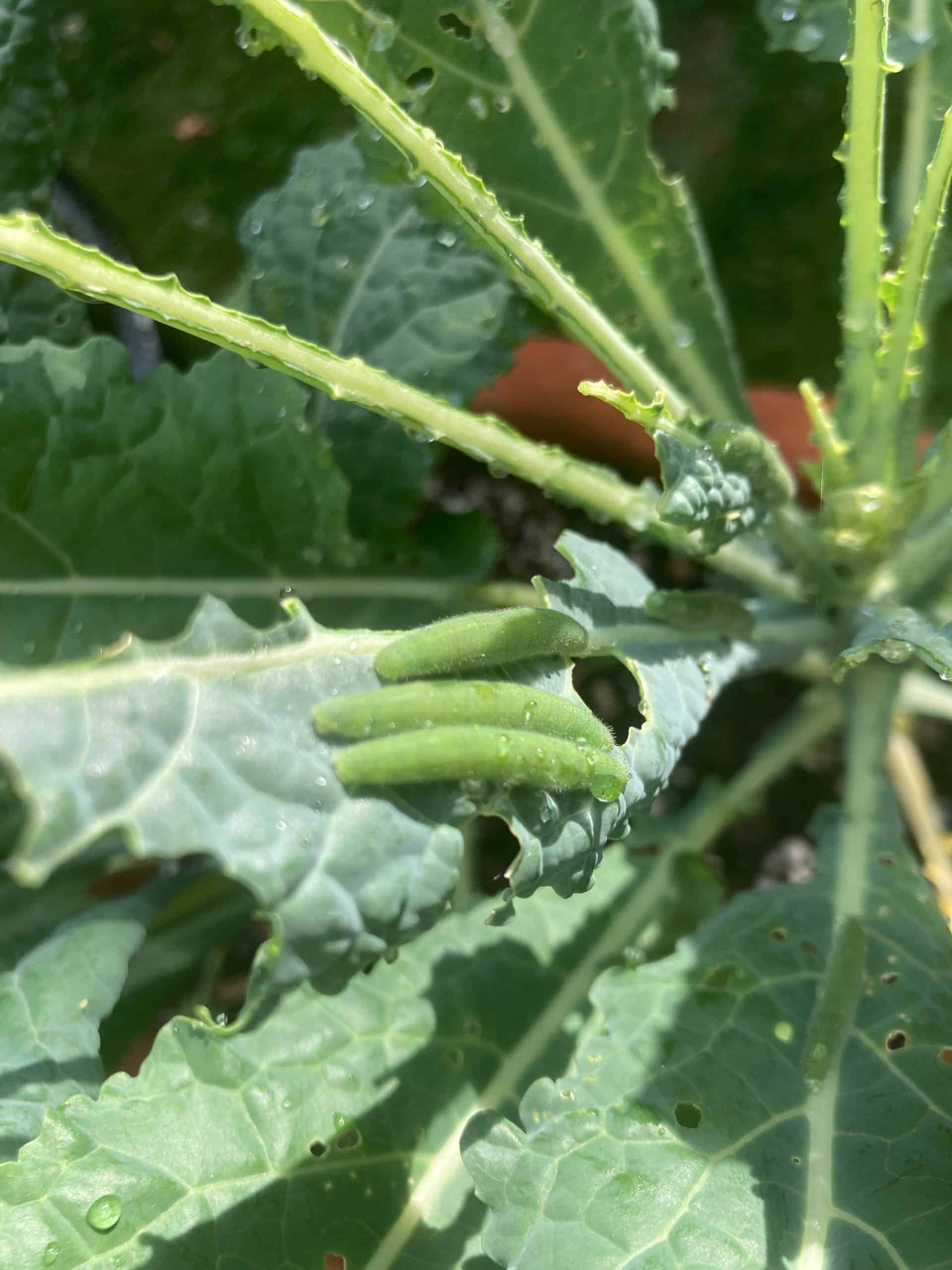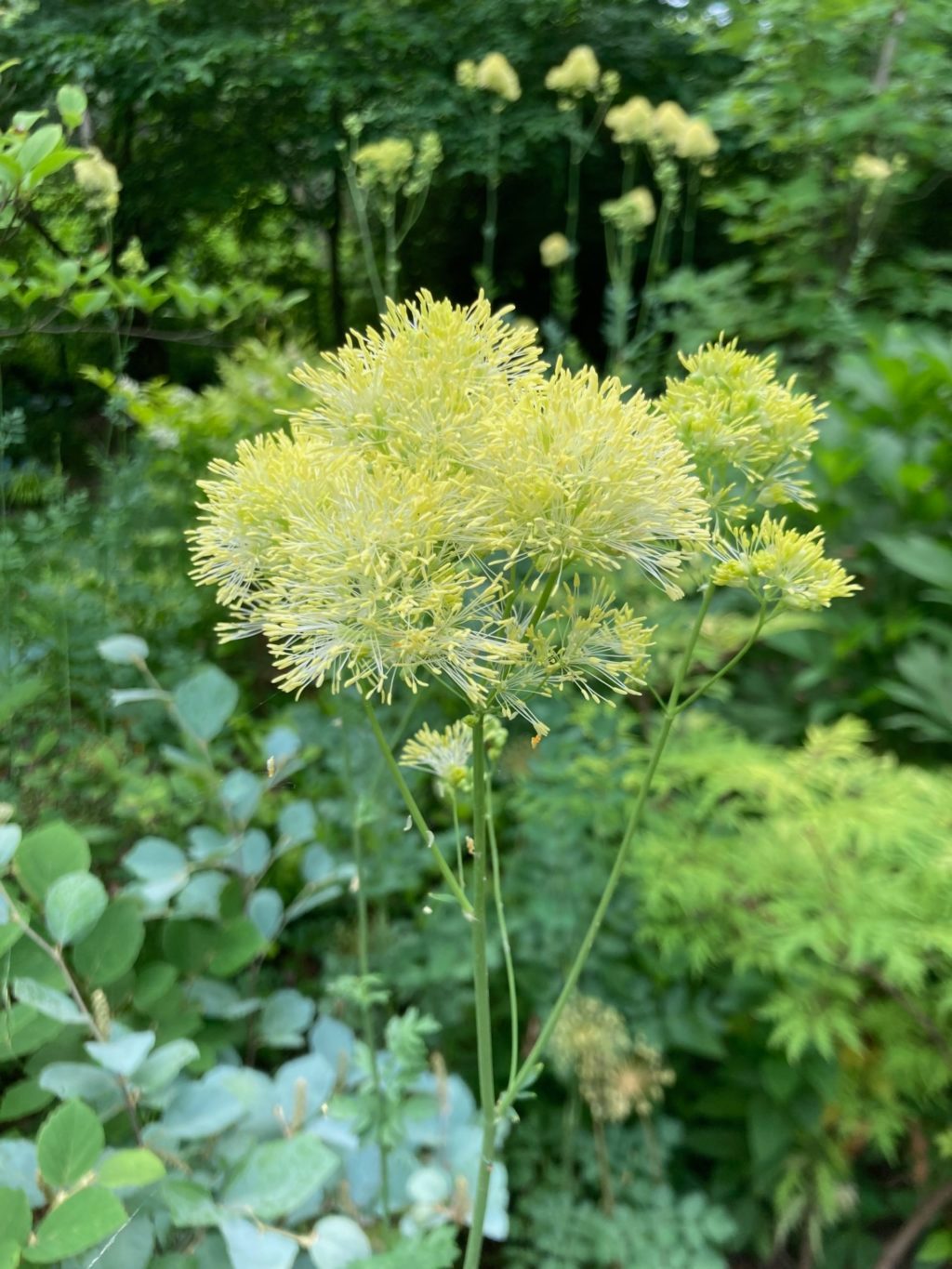I used to be leery of planting tall perennials in small borders, fearing they would need too much room. In fact, many tall perennials have a relatively small footprint, taking up little space at ground level, but adding another layer of interest above the mounding and clumping plants below. The narrower the profile, the easier they are to squeeze in.
This week, the fluffy, pale yellow flowers of ‘Tukker Princess’ meadow-rue (Thalictrum flavum ‘Tukker Princess’) are bobbing above an island bed situated in part sun in our back garden. The bed is packed with plants, but this meadow-rue always finds a way to pop up through the dense foliage of perennials and shrubs in midsummer to say, “Here I am!” Frankly, it’s becoming a bit too extroverted; I’m noticing more seedlings each season. Fortunately, the extras aren’t difficult to remove.

The meadow rue’s blue-green foliage is also attractive and even though plants easily reach six feet (180 cm), I’ve never needed to stake the slender stems. Hardy to Zone 4 and attractive to pollinators, too.
The meadow-rue family features several border workhorses. “Using meadow-rues for groundcover” highlights the benefits of a few of the shorter varieties.
The caterpillars got there first
I mentioned in an earlier newsletter that I had planted black kale (a.k.a. Lacinato kale) for foliage contrast in a container. I was more interested in admiring its long, dark bluish-green textured leaves than eating them, although I intended to harvest a few young leaves now and then for salads. Unfortunately, cabbage worms (the larval caterpillars of white cabbage moths) got to the kale first.
I offer this photo of mass destruction as proof that no matter how long one has gardened, and studied and written about gardening, Mother Nature often gets the upper hand. At least the neighbourhood birds and predatory beneficial insects have an extra takeout counter to enjoy.

Savvy Gardening’s “Cabbage worm identification and organic control” has lots of good advice. A small dome of floating row cover might have prevented my pot of skeletonized kale leaves, but I’m not sure that would have given me the look I was going for.
More gardening news
If you live in Ontario and have seen the spotted lantern fly, the Canadian Food Inspection Agency wants to know. ONnurserycrops Blog has more details.
Interested in a recipe for tulip bulb soup? Tulips may be making a comeback on our dinner tables, according to Gastro Obscura. Tulip bulbs, used in desperation in The Netherlands during World War II to fend off starvation, are now being grilled, stuffed or fried, and served at trendy restaurants.
A podcast by Orchard People, a Toronto-based website offering fruit tree care advice, talks about how using foliar sprays — including Coca-Cola — can improve tree health and productivity.









